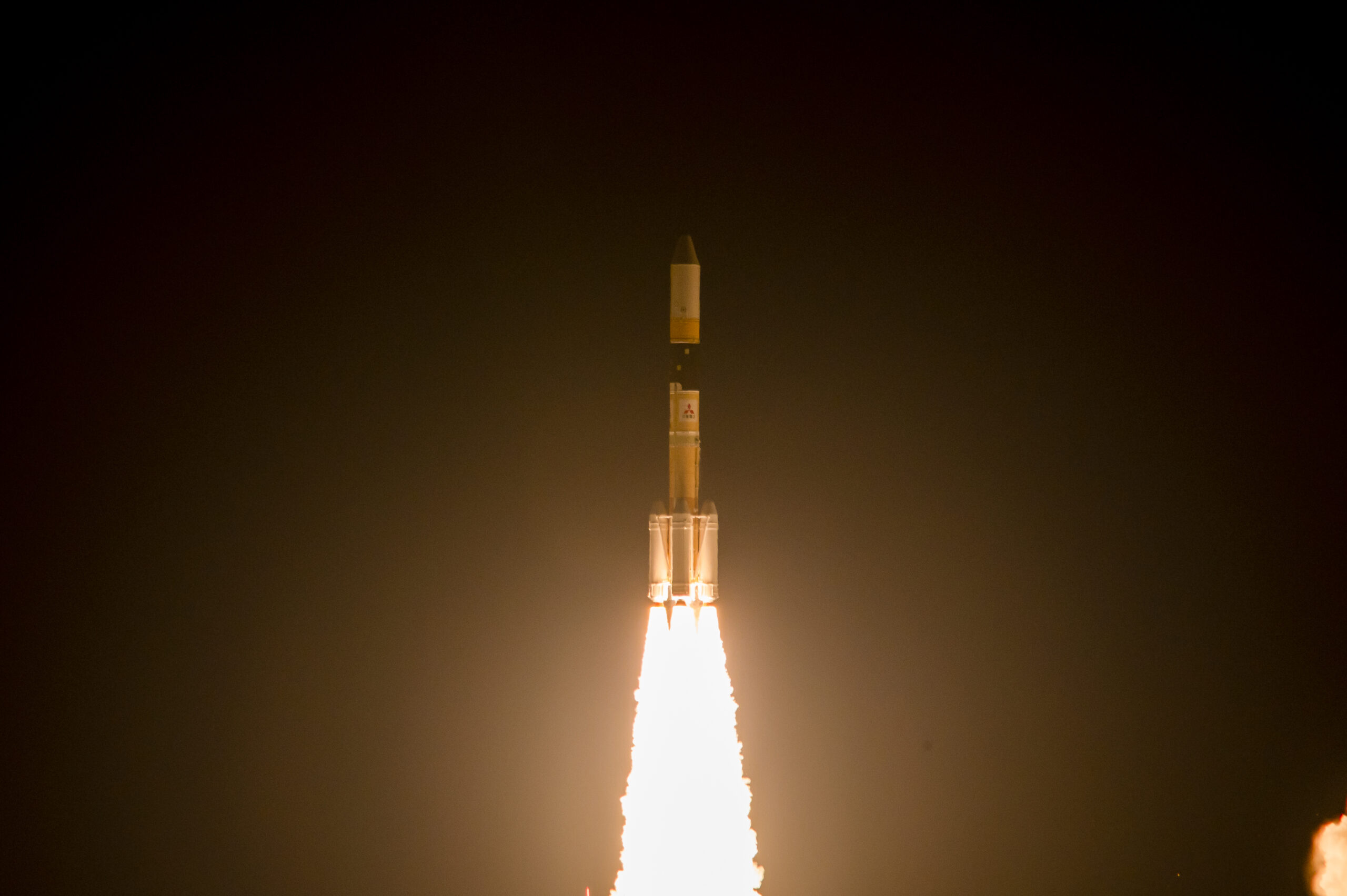TAMPA, Fla. — Inmarsat’s first dual-band telecommunications satellite launched Dec. 22 aboard Mitsubishi Heavy Industries’ H-2A rocket.
The rocket lifted off from Japan’s Tanegashima Space Center at 10:32 a.m. Eastern and deployed the nearly 5,500-kilogram Inmarsat-6 F1 satellite into geostationary transfer orbit about 26 minutes later. A little over two hours later, London-based Inmarsat tweeted that it had acquired initial telemetry from the satellite.
#I6F1 it’s good to hear from you!🛰️
Initial acquisition of telemetry from our satellite has been received loud and clear. @AirbusSpace @MHI_Group pic.twitter.com/3qLOJ7FNOE
— Inmarsat (@InmarsatGlobal) December 22, 2021
The launch was the H-2A’s 45th mission overall and 38th consecutive success since a 2003 failure. The workhorse rocket flew one other mission this year, an October launch carrying a Quasi-Zenith navigation satellite for the Japanese government.
Inmarsat-6 F1 (I-6 F), which relies on all-electric propulsion for orbit raising, will need about 200 days to climb to its geostationary slot above the Indian Ocean.
I-6 F1 is the first of two identical satellites Inmarsat ordered from Europe’s Airbus Defence and Space equipped with a hybrid L- and Ka-band payload. The second satellite, I-6 F2, is slated to launch on an undisclosed rocket next year.
Inmarsat will use the satellites’ dual-band payload to provide mobility connectivity services to maritime, aviation, and government markets.
I-6 F1 has a nine-meter aperture antenna for L-band, which is primarily used for voice calls and messaging, but is increasingly finding applications for tracking and monitoring devices beyond the reach of terrestrial communications networks.
The satellite also features nine steerable multi-beam Ka-band antennas for video and other higher throughput services.
Inmarsat currently provides L-band services through its eight-satellite ELERA network and Ka-band capabilities through its five-satellite Global Xpress constellation.
According to Inmarsat, I-6 F1 doubles the power and capacity per beam of the operator’s previous Inmarsat-4 generation of L-band satellites.
Inmarsat-4A F4, also known as Alphasat, was Inmarsat’s last L-band satellite and launched in 2013.
In addition to finishing I-6 F2, Airbus is building three more Global Xpress satellites (GX7, 8 and 9) for Inmarsat, to be launched to geostationary orbit in 2023.
Inmarsat also has Global Xpress payloads, dubbed GX10A and GX10B, on two satellites U.S.-based Northrop Grumman is building for Space Norway, an organization controlled by the Norwegian government. SpaceX is slated to launch those satellites to highly elliptical orbit next year for Arctic coverage.
In July, Inmarsat announced plans to add low Earth orbit satellites into the mix to better serve global mobility markets through a multi-orbit constellation dubbed Orchestra.
In November, U.S.-based satellite operator Viasat announced plans to buy Inmarsat in a $7.3 billion deal to expand its Ka-band GEO network in multiple orbits and spectrum bands.
